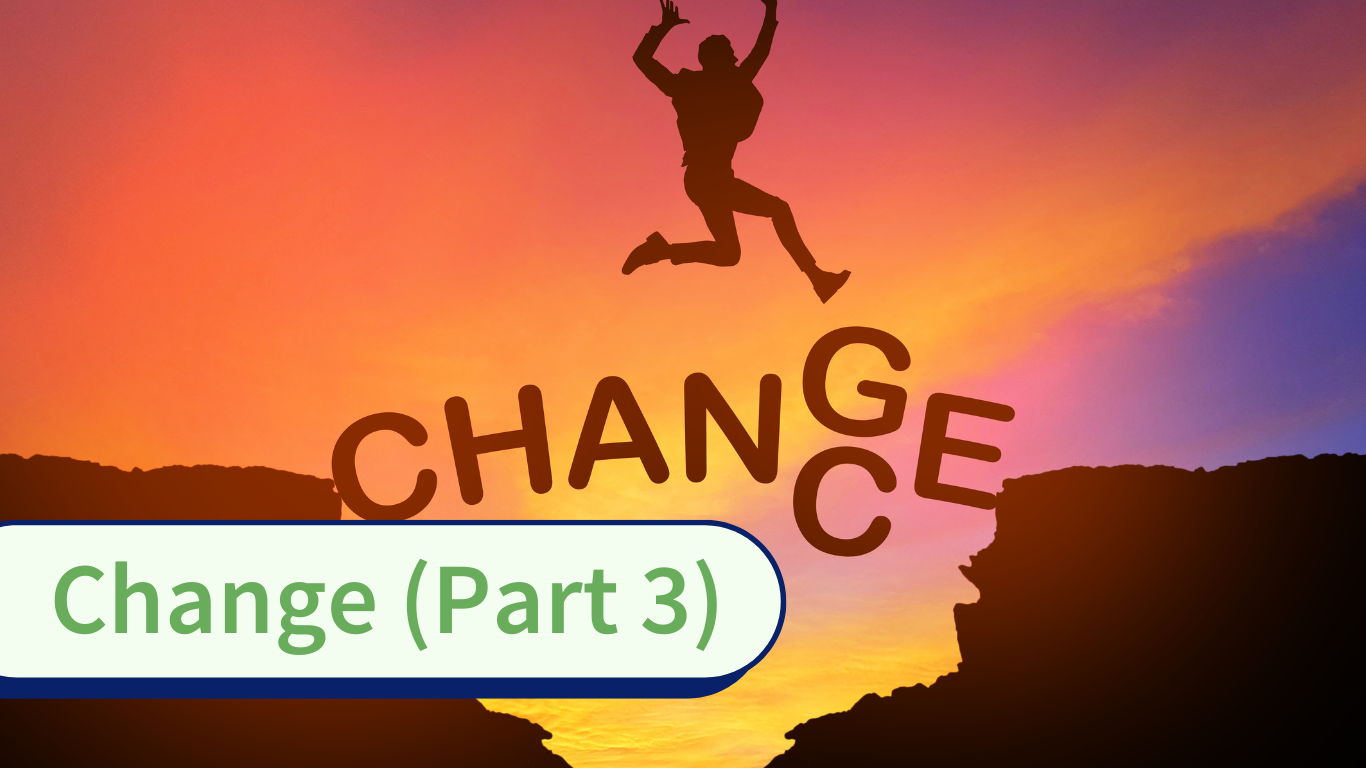Welcome back to the final part of our How to Make Change Happen series! In Part 1, we focused on identifying what needs changing and aligning it with your values. Part 2 gave you actionable steps to build new habits in a sustainable, ADHD-friendly way. Now, in Part 3, we’re bringing it all together by exploring how to pace your change and fit it into your daily life without stress.
The Key to Sustainable Change: Slow Integration
One of the biggest mistakes people make when trying to change is thinking they need to completely overhaul their routines. Instead of forcing out bad habits or trying to do everything at once, the secret is slow integration—introducing just one new thing at a time and letting it naturally take up space.
Think of it like water finding its way through rocks—it doesn’t force its way through but slowly carves a new path over time. By adding one new behavior, you’re not erasing what’s already there; you’re creating space for a shift to happen naturally.
Working With Your Routine, Not Against It
If you’ve been following along, you already know that habit change isn’t about forcing yourself into something new—it’s about building on what already exists. In fact, your existing habits can be the foundation for new ones. Here’s how you can work with your current habits instead of against them:
- Stack It Onto an Existing Habit – Instead of creating an entirely new space for a habit, attach it to something you already do. Example: If you want to journal daily, place your notebook next to your coffee mug so it becomes part of your morning routine.
- Make Small Shifts in Time Allocation – Instead of cutting out an unwanted habit, replace small parts of it with something new. Example: If you want to read more but tend to scroll social media before bed, start by setting a 5-minute reading timer before picking up your phone.
- Let It Grow Organically – Allow the new behavior to take up more space over time rather than forcing a drastic shift. Example: If you want to walk more but don’t have time for a full workout, start with 5-minute walks and let them extend naturally.
Embracing Change Without Undoing Yourself
Change shouldn’t feel like undoing everything you’ve built. Instead, think of it as layering in small improvements that don’t disrupt what’s already working for you. Here’s how to make sure you’re pacing yourself in a healthy way:
- Don’t Rush It – Just because you want to make a change doesn’t mean it needs to happen overnight. Give yourself permission to move at your own pace.
- Track Without Pressure – Use a simple system (like Brili’s Focus of the Month feature) to keep track of your progress without feeling the need to be perfect.
- Celebrate the Small Wins – Every time you integrate a new habit, acknowledge it. Your brain thrives on positive reinforcement.
The Power of Small Shifts
Just like in Part 2, where we talked about habit stacking and prioritization, this phase is about focusing on one thing at a time. Here’s why this works:
- ADHD brains thrive on novelty – Instead of fighting your attraction to new things, lean into it by shifting towards new behaviors gradually.
- Your energy fluctuates – Some days, change will feel easy. Other days, it won’t. That’s normal! Instead of seeing it as failure, recognize it as part of the process.
- You don’t need to eliminate anything immediately – Over time, as you give more time to what you want, the old habits will naturally take up less space.
The Watering Can Analogy: Focus on One Plant at a Time
Remember the watering can analogy from Part 2? If you sprinkle water all over the place, nothing grows properly. But if you focus on one area, the roots grow deep and strong.
This applies to pacing your change:
- Focus on one habit at a time.
- Give it the time it needs to grow.
- Once it’s solid, move on to the next.
Wrapping Up: The Gentle Approach to Change
The best way to make change happen without burnout is by integrating new behaviors slowly and gently into your life. Let them grow at their own pace rather than forcing them in. By now, you have everything you need to start:
- Identify what needs changing (Part 1)
- Take action with small steps (Part 2)
- Pace the change and let it fit naturally into your life (Part 3)
Until Next Time - Keep Growing!
Change isn’t about pressure; it’s about creating space for growth. If you want more insights, check out these resources:
- How to Manage Hyperfocus – Tips for managing intense focus and staying balanced.
- Finding Balance with ADHD – Strategies for reducing overwhelm and creating harmony in your routines.
- Value-Driven Decision-Making – Learn how to align your changes with your core values.
- Creating Sustainable Habits – Insights on building habits that last.
Change Happens at Your Pace
Thank you for following along with our How to Make Change Happen series! If you’ve been implementing these strategies, we’d love to hear about your progress. Remember, change isn’t about forcing things—it’s about giving yourself the time and space to grow. Keep nurturing those small shifts, and you’ll see the transformation unfold naturally.
